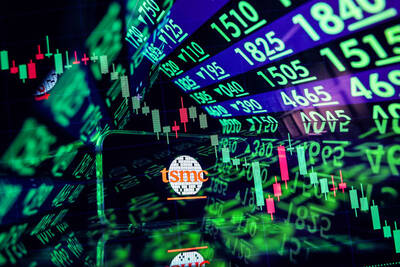Dell Inc, the world's second-biggest maker of personal computers, will sell models equipped with Linux software in China this year, offering a cheaper alternative to Microsoft Corp's Windows in the second-largest PC market.
The company will begin selling computers running Linux software from Novell Inc, Theresa Shen, a Beijing-based spokeswoman for Dell, said by telephone yesterday. Round Rock, Texas-based Dell hasn't set a specific date, she said.
Linux may help chief executive officer Michael Dell cut prices and costs as he seeks to regain the top spot in the global computer market from Hewlett-Packard Co. Dell joins Hewlett-Packard and Lenovo Group Ltd (
Dell has said it began sales of Linux-based computers in the US in May, after receiving "overwhelming" requests through a Web site set up in February for customer suggestions. The company began selling a desktop and a laptop model in Europe this month using Canonical Ltd's Ubuntu Linux software, Shen said.
Dell hasn't decided how many models in China will be installed with Linux, Shen said. She declined to comment on pricing.
Hewlett-Packard, which has led Dell in the PC market for four consecutive quarters, already installs Linux on some of its PCs in China and Latin America. China's Lenovo, the third-largest PC maker, will begin selling Linux laptops in the fourth quarter.

In a high-security Shenzhen laboratory, Chinese scientists have built what Washington has spent years trying to prevent: a prototype of a machine capable of producing the cutting-edge semiconductor chips that power artificial intelligence (AI), smartphones and weapons central to Western military dominance, Reuters has learned. Completed early this year and undergoing testing, the prototype fills nearly an entire factory floor. It was built by a team of former engineers from Dutch semiconductor giant ASML who reverse-engineered the company’s extreme ultraviolet lithography (EUV) machines, according to two people with knowledge of the project. EUV machines sit at the heart of a technological Cold

Taiwan’s long-term economic competitiveness will hinge not only on national champions like Taiwan Semiconductor Manufacturing Co. (TSMC, 台積電) but also on the widespread adoption of artificial intelligence (AI) and other emerging technologies, a US-based scholar has said. At a lecture in Taipei on Tuesday, Jeffrey Ding, assistant professor of political science at the George Washington University and author of "Technology and the Rise of Great Powers," argued that historical experience shows that general-purpose technologies (GPTs) — such as electricity, computers and now AI — shape long-term economic advantages through their diffusion across the broader economy. "What really matters is not who pioneers

Taiwan Semiconductor Manufacturing Co (TSMC, 台積電) last week recorded an increase in the number of shareholders to the highest in almost eight months, despite its share price falling 3.38 percent from the previous week, Taiwan Stock Exchange data released on Saturday showed. As of Friday, TSMC had 1.88 million shareholders, the most since the week of April 25 and an increase of 31,870 from the previous week, the data showed. The number of shareholders jumped despite a drop of NT$50 (US$1.59), or 3.38 percent, in TSMC’s share price from a week earlier to NT$1,430, as investors took profits from their earlier gains

TAIWAN VALUE CHAIN: Foxtron is to fully own Luxgen following the transaction and it plans to launch a new electric model, the Foxtron Bria, in Taiwan next year Yulon Motor Co (裕隆汽車) yesterday said that its board of directors approved the disposal of its electric vehicle (EV) unit, Luxgen Motor Co (納智捷汽車), to Foxtron Vehicle Technologies Co (鴻華先進) for NT$787.6 million (US$24.98 million). Foxtron, a half-half joint venture between Yulon affiliate Hua-Chuang Automobile Information Technical Center Co (華創車電) and Hon Hai Precision Industry Co (鴻海精密), expects to wrap up the deal in the first quarter of next year. Foxtron would fully own Luxgen following the transaction, including five car distributing companies, outlets and all employees. The deal is subject to the approval of the Fair Trade Commission, Foxtron said. “Foxtron will be